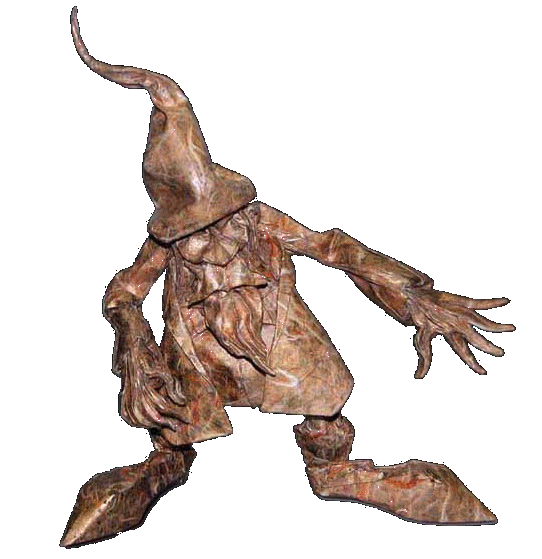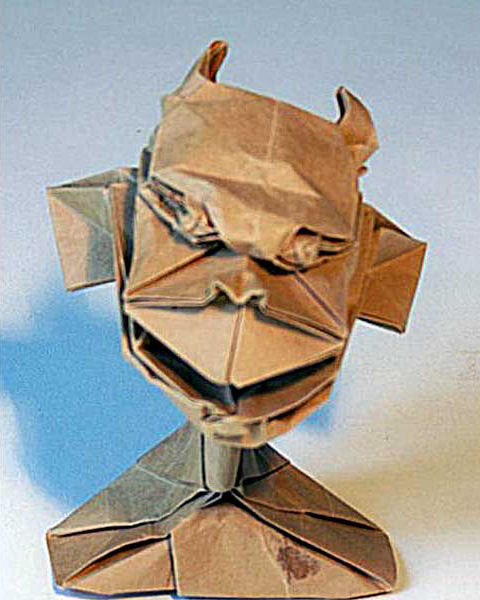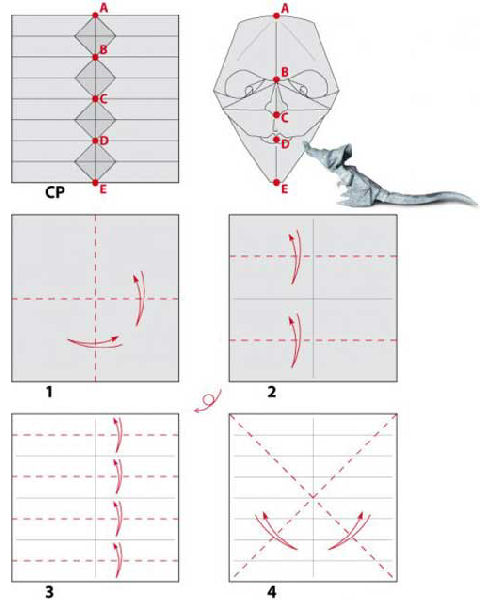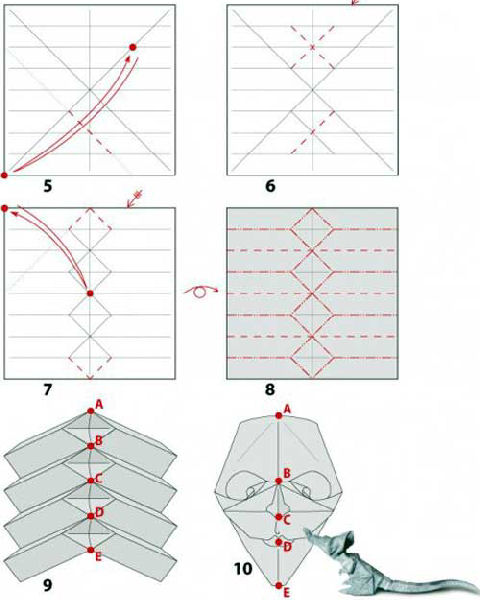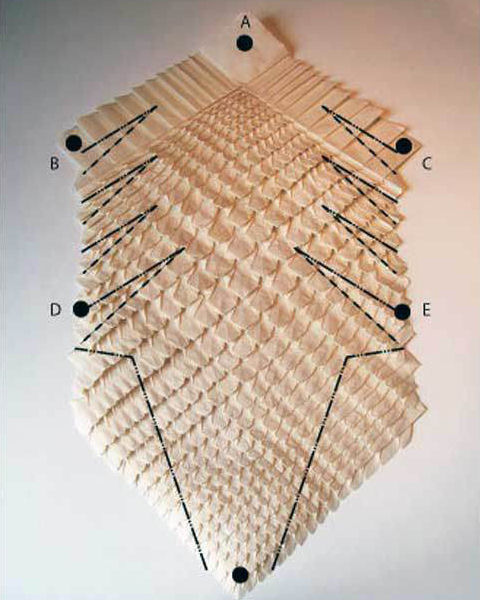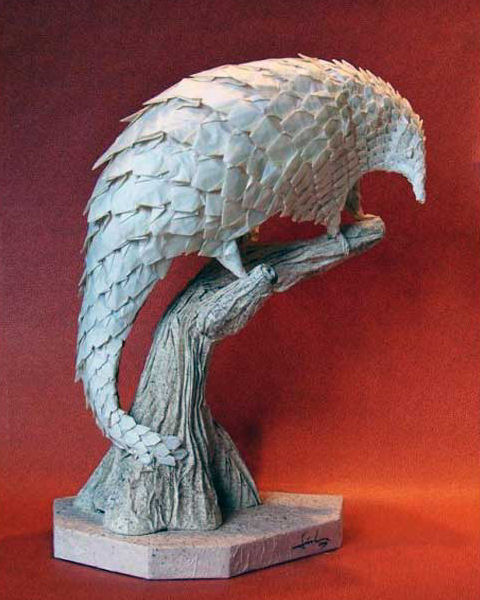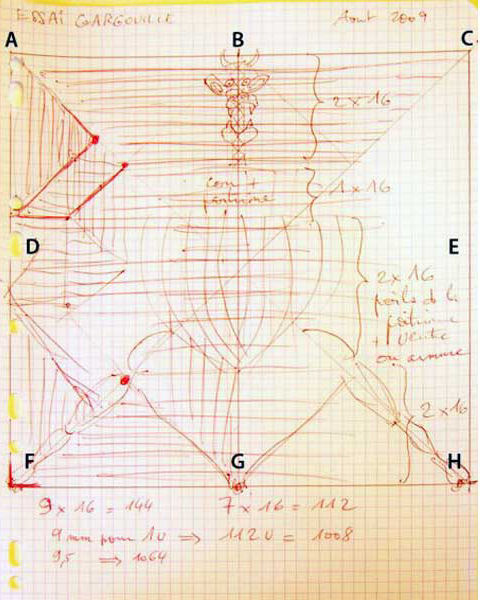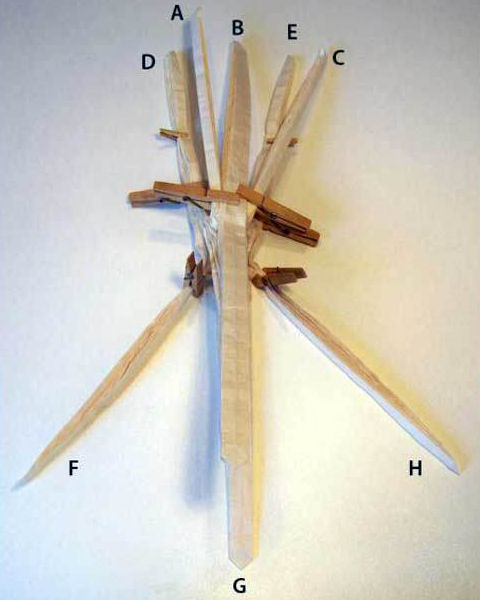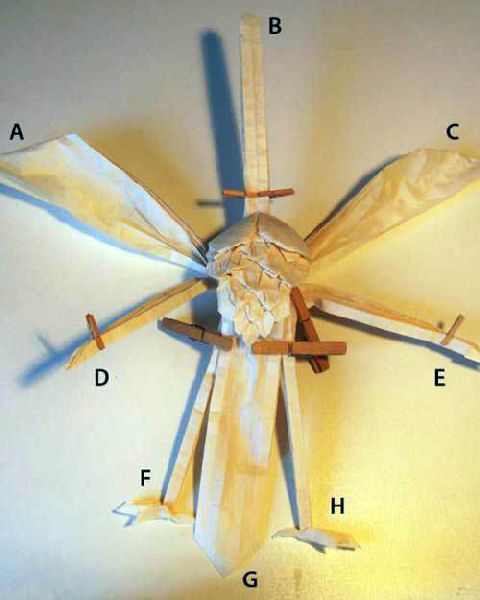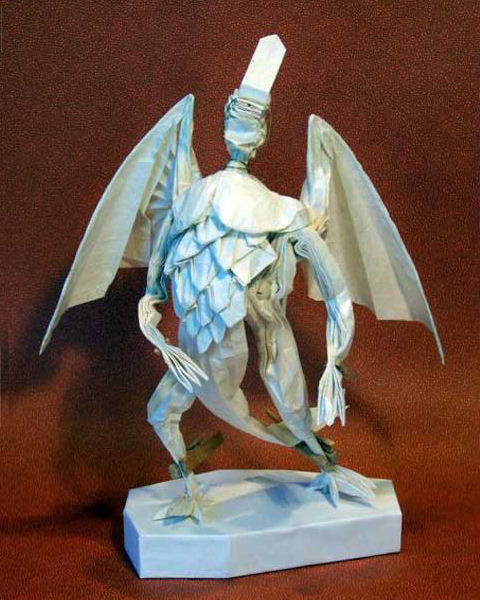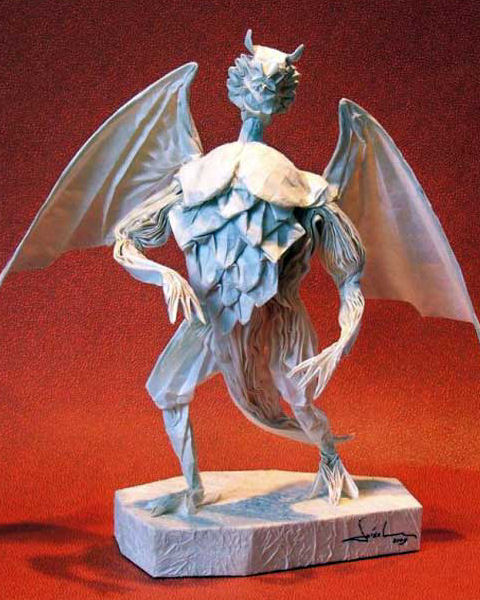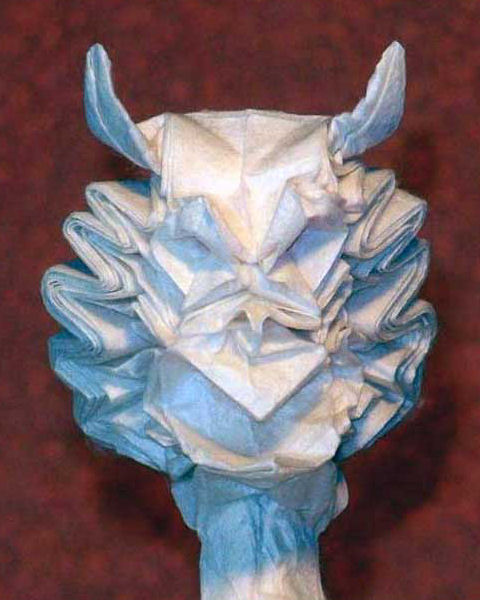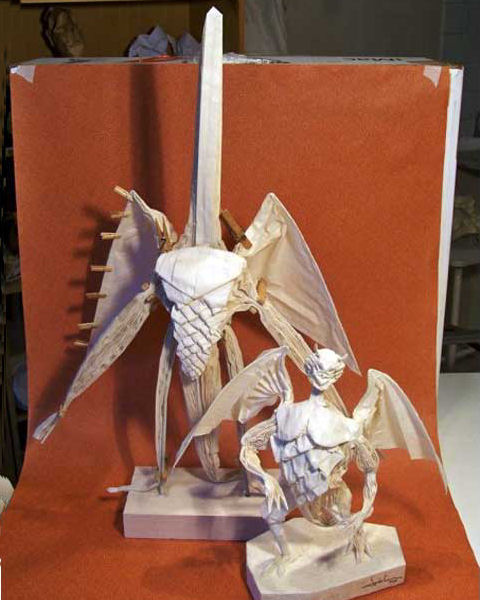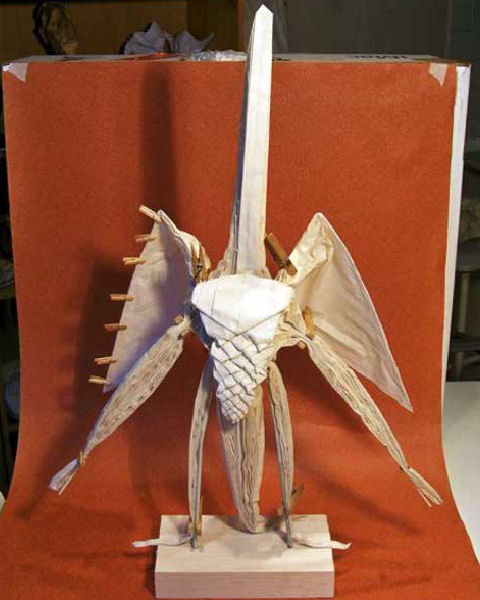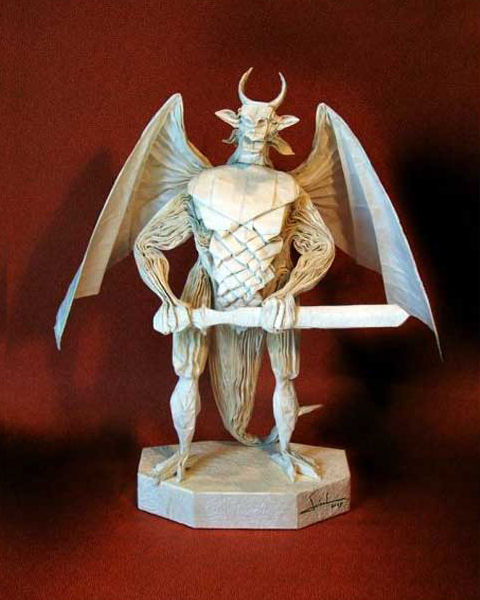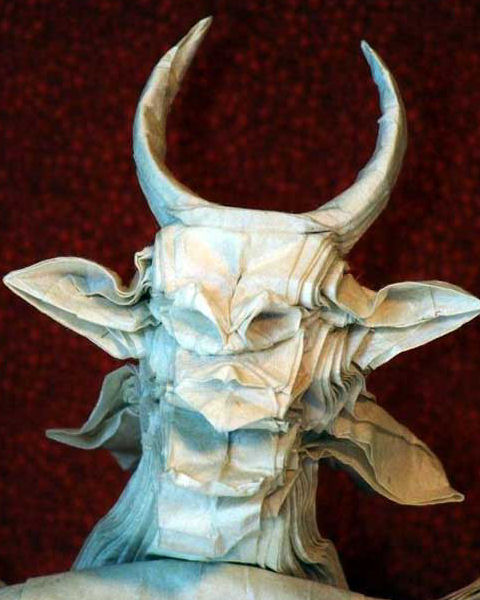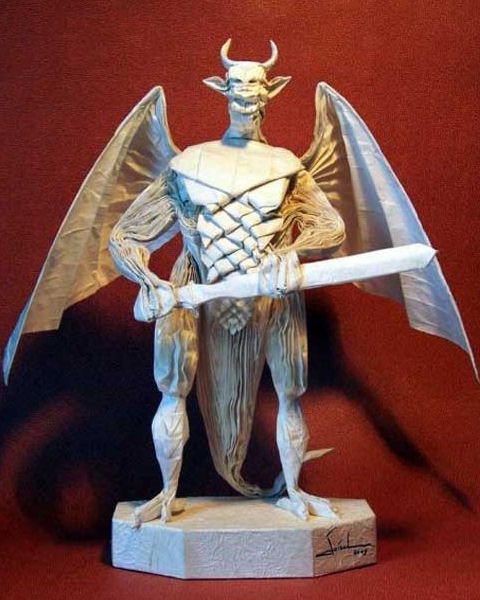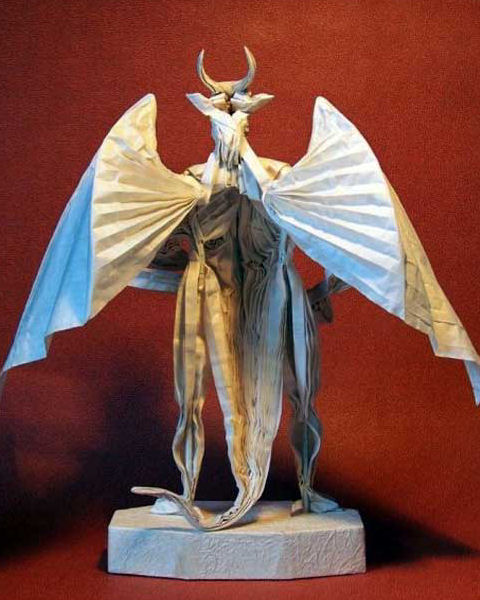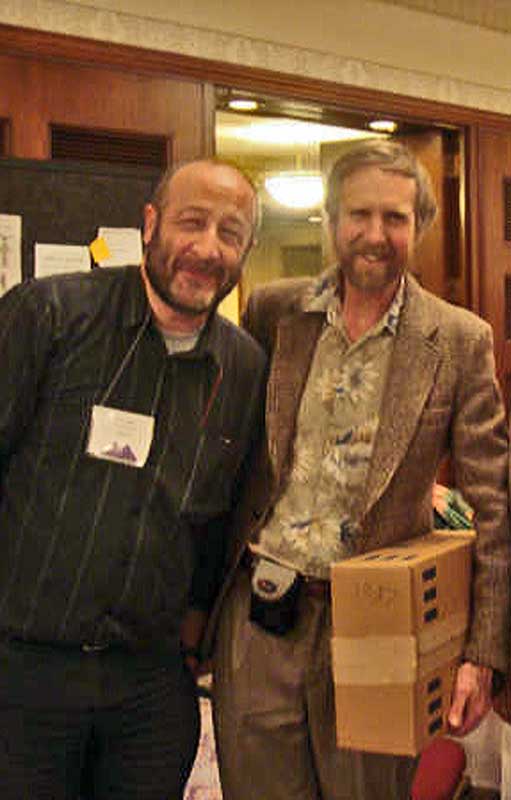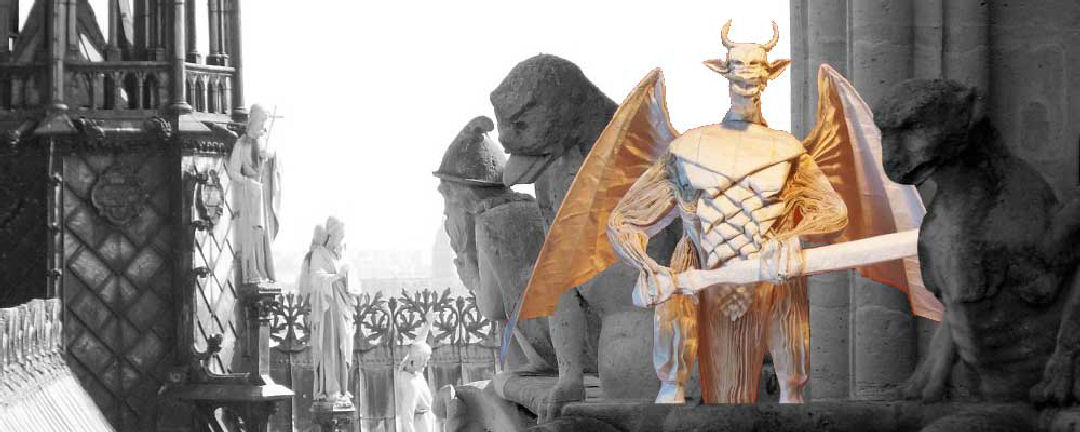
Eric Joisel : Balrogs
Gargoyle or Balrog?
“Here is the result of searches I made on Google:
In architecture, a gargoyle is a carved stone grotesque with a spout designed to convey water from a roof and away from the side of a building. The were a favorite architectural element of 13th-15th Century French cathedrals and often part of the gutters. Gargoyles are usually an elongated fantastic animal because the length of the gargoyle determines how far water is thrown from the wall.
Gargoyles
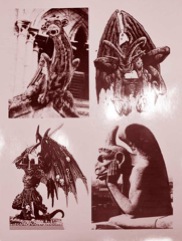 The term originates from the French gargouille, originally ‘throat’ or ‘gullet’. It is also connected to the French verb gargariser, which means ‘to gargle’. The Dutch word for gargoyle is waterspuwer, which means ‘water spitter’ or “water vomiter.”
The term originates from the French gargouille, originally ‘throat’ or ‘gullet’. It is also connected to the French verb gargariser, which means ‘to gargle’. The Dutch word for gargoyle is waterspuwer, which means ‘water spitter’ or “water vomiter.”
Gargoyles are said to scare off and protect from any evil or harmful spirits.
A Balrog is a fictional demonic creature from J.R.R.Tolkien’s Middle-earth fantasy writings and appears as an enemy of Gandalf in The Lord of the Rings. Such creatures first appeared in print in his novel ‘The Lord of the Rings’, though they figured in earlier writings that posthumously appeared in ‘The Silmarillion’ and other books.
Balrogs are described as tall, menacing humanoid beings, with the ability to shroud themselves in fire, darkness, and shadow. They frequently appeared armed with fiery whips ‘of many thongs’, and occasionally used long swords. In Tolkien’s later conception, they could not be casually destroyed; significant power was required. Only dragons rivalled their capacity for ferocity and destruction, and during the First Age of Middle-earth, they were among the most feared of Morgoth’s forces.
Watch the slideshow below to see a step-by-step demonstration of the creation of a balrog. Enjoy.”
“There is a lot about life that Eric has taught me. First, Eric says ‘I must suffer’. I respond, ‘I can’t imagine suffering on your scale!’ It is not just the number of folds, it is the execution in the tradition of great sculptors like Rodin, or Bernini, that decades of practice would reward only a few. ‘The most important hand is your support hand’, Eric continues. ‘What?’ I still need help with this one, but it makes intuitive sense for everything I do. ‘Then you do like this, and this…’, and Eric has lost me until he laughs. A Joisel laugh can evaporate all suffering. For me it is such a gift.”
Bernie Peyton
